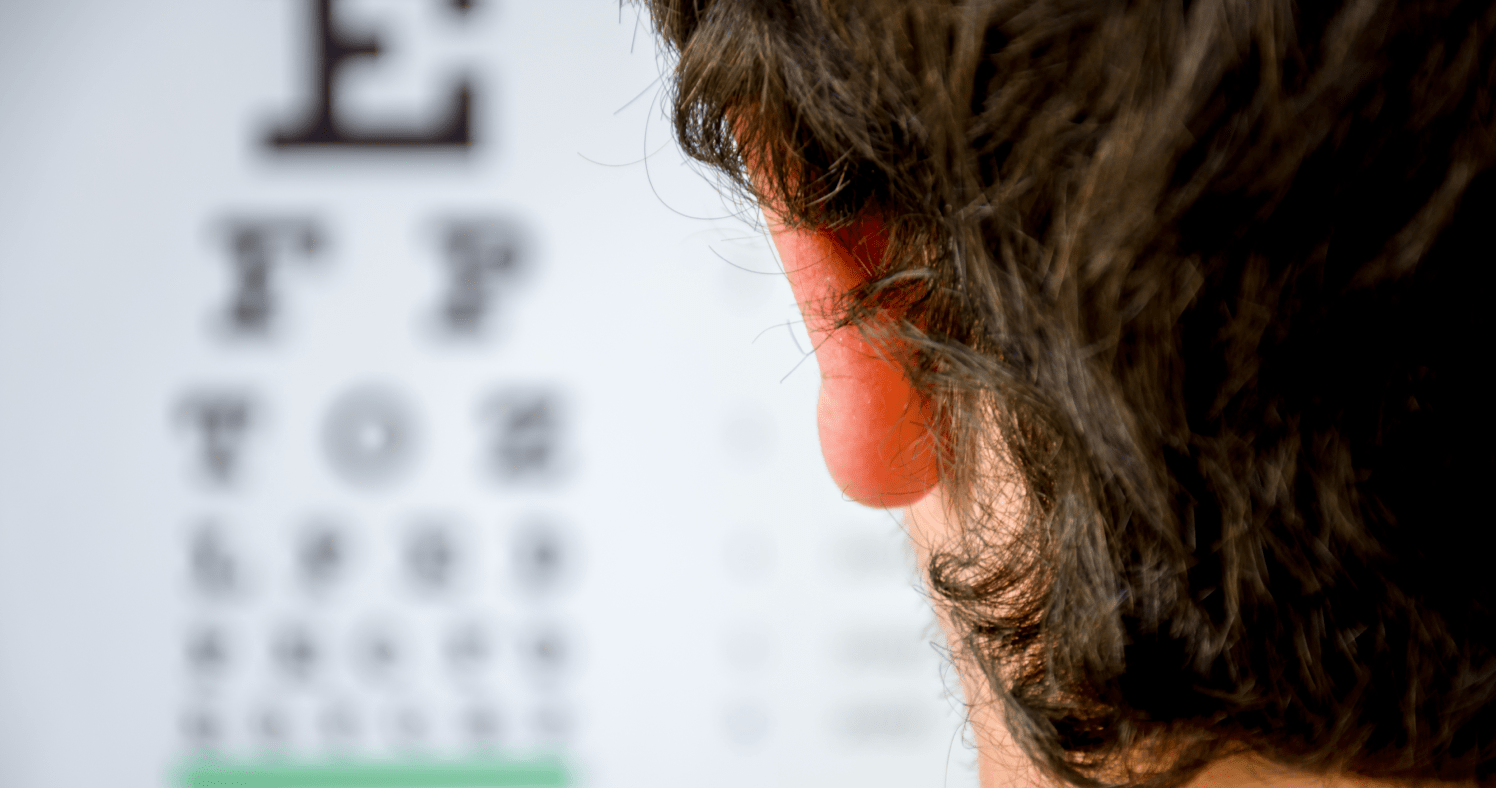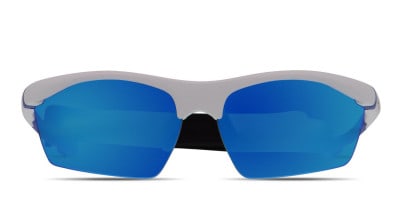What is vision therapy?
Updated JAN 26, 2023 • 9 min read

Summary in 30 seconds:
In this article, we’ll expand on what visual skills are, is it possible to train those skills, and what does visual therapy have to do with it all?
Visual skills: Both seamless and complex.
Interactive, dynamic, comfortable vision is essential for optimal engagement with the world around us. The visual skills which are needed to hit a tennis ball, read a book or watch a bird fly probably don’t cross most people’s minds when they are engaged in these activities. That’s because normally the visual system integrates with other sensory systems seamlessly.
However, several visual skills are needed for accurate focusing of the eye while coordinating eye movements to track a baseball or read a line in a book. Judging distance properly is required for driving a car, sinking a putt or catching a ball. Visual tasks require the brain, eyes and body to work together in order to coordinate these complex tasks.
In this article:
- Types of Visual Skills
- Other areas of the Visual System
- Vision and Learning
- Skills Benefited from Vision Therapy
- Does Insurance Cover Vision Therapy?
Types of visual skills.
For clear comfortable vision, the eyes need to be aligned vertically and horizontally while focused accurately at the distance of the object being observed. The eyes need to be able to maintain sustained focus up close for reading and long distance vision.
These visual skills need to be integrated with dynamic eye movements, looking side to side, or in any direction. A breakdown of certain visual skills can lead to double vision, intermittent blurred vision, poor judgment of distance, headaches, poor or slow reading ability and, avoidance of reading.
Let’s take a deeper look at individual visual skills:
- Focusing and convergence: The lens inside the eye is able to change shape in order to change power. Viewing an object in the distance takes less power than looking at a cell phone screen. When the lens adds power to view a cell phone the eyes turn inward; when the eyes look in the distance they point straight ahead.
- Eye alignment: The eyes need to team together to point at the same object at the same distance. Children (and adults) whose eyes are misaligned while looking up close will frequently lose their place while reading or appear inattentive to their paperwork, preferring to look out the window.
If the misalignment is severe, the eyes may cross or turn out. Consistent or persistent eye turns are known as strabismus. Strabismus is often associated with decreased vision in one eye and limited depth perception.
The inability to accurately adjust the power and alignment of the eyes lead to symptoms such as tired eyes, headaches, loss of place when reading, and even double vision. Accurate and sufficient convergence of the eyes at a reading distance is a trainable skill. [1]
Another example of this is when reading a book:
The eyes should track smoothly along the line of the words. The eyes should accurately jump from one line to the next, not over or undershooting the next line. Smooth tracking and accurate jumping are needed for fast, efficient reading.
It is important to remember, the majority of what a child learns is through vision. [4,5,6,7]
- Visual perception: The visual awareness to be able to see, interpret and interact with the surrounding environment. Remembering what an object looks like is known as visual memory. What does a channel changer look like and what does it do? Remembering shapes and groupings of letters is necessary for reading.
Athletes visualize in their mind’s eye where a ball is to be hit, how hard to hit it, and desired ball flight. This is known as visualization.
- Integration of the visual system with other senses: Have you ever dropped your keys on the floor? The eyes automatically look towards the sound of them hitting the floor. The sense of hearing, touch and smell are integrated with the visual system. Visual integration is necessary to accomplish tasks like riding a bicycle and looking at the scenery while being aware enough to miss the pothole in the road. [8]
What are other areas of the visual system?
Visual acuity: The visual system’s ability to see clearly. It may be improved through the use of glasses, contact lenses and/or refractive surgery.
Color vision: The light sensitive layer inside of the eye is known as the retina. A specialized area of the retina, known as the macula, is responsible for seeing details and reading a book. The macula has three types of color vision cells that pick up red, green and blue light waves.
This light information is sent to the brain where color vision is interpreted. Color vision problems can occur with certain eye diseases and aging. Color vision deficits occur when there are less than three types of color vision cells present or their peak color sensitivities are shifted. The most common hereditary color vision deficits occur in males. Diminished color vision may occur with age. Altered color vision is associated with several disease conditions and needs to be sorted out by a doctor. [15]
Vision and Learning
Most of the information that is perceived from the world around us is gathered and processed through the visual system. In school, experts estimate that approximately 80% of educational information is presented visually. [4,5,6,7] Deficits in certain visual skills make visual attention difficult.
For example, learning may be a challenge for a student who has trouble tracking words on a page smoothly while sustaining focus on the page. Poor tracking and the inability to sustain focus are learning-related vision problems but they are not learning disabilities.
Difficulty keeping the eyes accurately pointed and focused at reading material can lead to symptoms of eye strain discomfort, blurry vision and avoidance of attending to assignments. When it is uncomfortable to look up close for a period of time, it is more difficult to acquire knowledge from near-vision tasks.
Is Vision therapy a hoax? Are visual skills trainable?
Not all aspects of vision are trainable; however, many learned visual skills are. After we are born, we learn to walk, talk and visually interact with the world around us. It is readily apparent when there are delays in physical coordination and speech; visual delays are not as easily recognized by parents and pediatricians.
For this reason, it is important for an eye doctor with expertise in developmental, functional or behavioral vision to assess if a child is vision ready for learning before starting school. [8]
After being injured in a car accident, often neuro-muscular re-education is prescribed. This prescription is for physical and/or occupational therapy. Many sessions are required to rehabilitate the injury.
What skills can benefit from vision therapy?
Vision therapy is designed to re-educate or rehabilitate certain aspects of the visual system. Not all areas are trainable. For example, color vision is not a trainable skill. Vision therapy benefits visual skills that are learned and/or where a neuromuscular deficit is identified with the oculo-motor system.

Professional tennis players need elite visual skills to track a tennis ball that is served traveling over 100mph. The player must notice the type of spin imparted on the ball even before it bounces, decide which direction to move and what type of shot is required to successfully return the ball.
What is visually involved in the return of serve?
- Tracking: Accurate eye movement to follow the ball.
- Visualization: Before hitting the ball, a player must envision what type of shot is needed, how much power to exert and where the opponent is positioned.
- Binocular vision: The eyes need to coordinate with each other in order to judge distance accurately.
- Visual integration: The visual system integrates eye hand coordination with body movements.
- Peripheral awareness: Keeping your eyes on the ball while being aware of court position and the opponent’s location requires peripheral awareness.
- Visual perception: The brain’s interpretation of what the eye sees along with the ability to quickly react to the situation.
Visual rehabilitation may be indicated following a traumatic brain injury (TBI). [9,10] There are many areas within the brain that are involved with some aspect of the visual system. So it is not surprising that after a traumatic brain injury, some patients experience an interruption of communication between the eyes and brain.
Vision related learning problems may be remediated with vision training. [11,12] Vision therapy aids in relearning visual skills following traumatic brain injuries. Athletes wanting to gain a visual edge will benefit from sports vision training to enhance their visual skills. [13,14]
Does insurance cover vision therapy?
Insurance coverage varies by individual policy coverage, insurance company plans and state law requirements. Many policies cover comprehensive eye examinations every two years but do not include vision therapy.

Medical eye coverage for conditions such as retinal detachment, conjunctivitis or eye trauma is often covered at more frequent intervals.
It is important to review your own policy to check your actual coverage. Call your insurance company to help explain the details of your coverage. If your policy is through your employer, talk with the Employment Benefits Manager, perhaps there is another policy which is better suited for your situation. Inquire with the doctor’s office offering vision therapy sessions to see if there is a payment plan as an option.
Is vision therapy tax deductible?
First of all, please consult your tax professional for advice. If you itemize your taxes, vision therapy could potentially be deductible under medical care as treatment for the purpose of affecting the body’s function. Deductions should only be taken when recommended by your tax professional.
What to keep in mind when searching online for vision therapy near me?
As with any specialty care, it is important to find an eye care practice that specializes in vision therapy. There are optometric practices that specialize in sports vision enhancement while other practices focus on eye turns (strabismus – wall or crossed eyes); developmental vision and vision related learning disabilities.
Many of these practices have the equipment needed to also work with TBI patients, visual skill difficulties and vision related learning problems.
The optometrist should have these areas of expertise: behavioral, developmental or functional vision therapy. Here is a list of organizations to help find the right help for your particular visual needs:
Published October 2, 2022|Updated January 26, 2023
SOURCES



 Wrap
Wrap
 Rectangle
Rectangle
 Oversized
Oversized
 Aviator
Aviator
 Square
Square
 Wayframe
Wayframe



